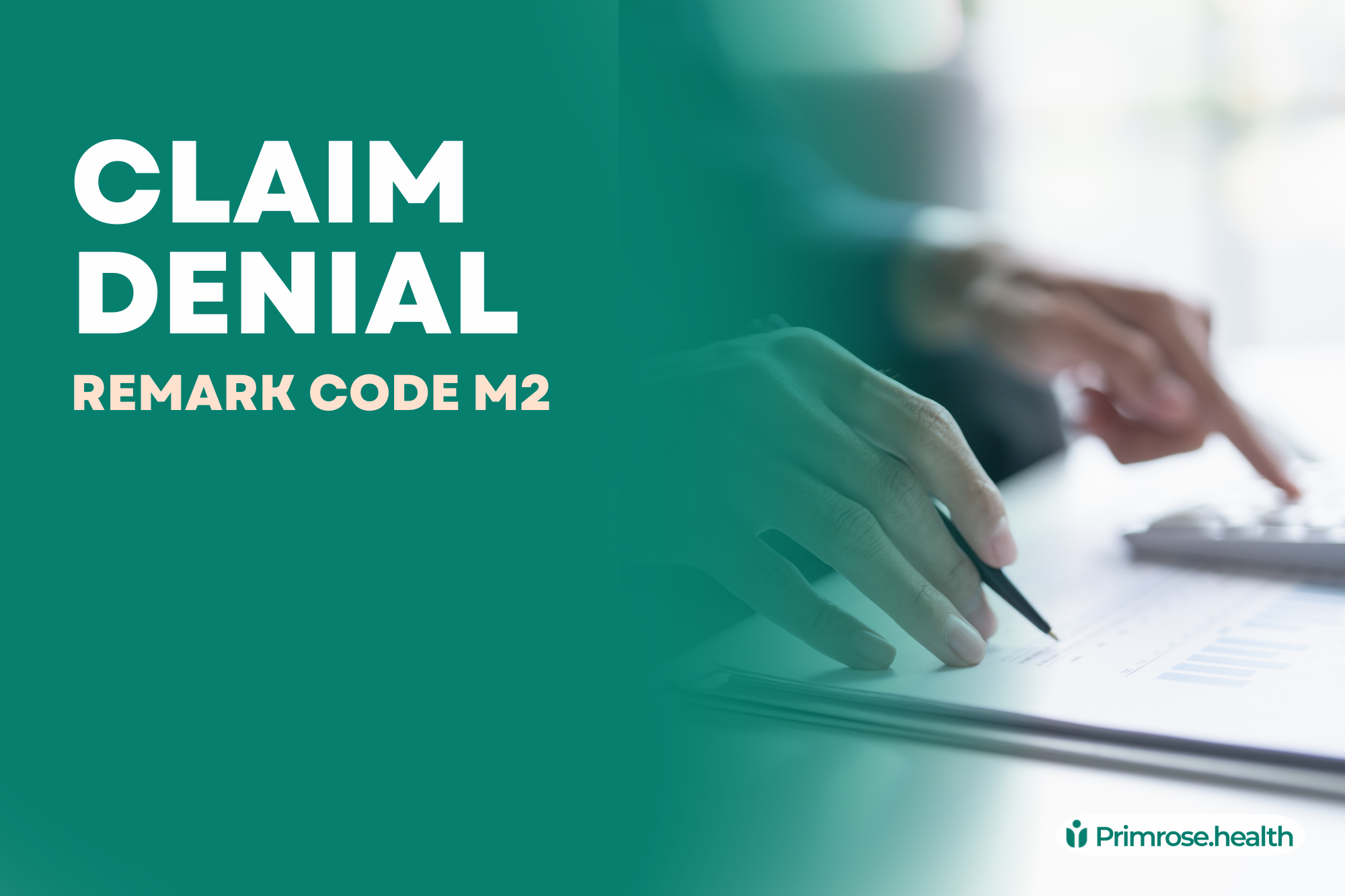Introduction
In this detailed world of medical billing, understanding specific billing codes and modifiers is essential for healthcare providers to maintain proper reimbursement.
The M2 designation represents an important concept: services that are not paid separately when a patient is receiving inpatient care. This designation plays a fundamental role in determining how services are billed and eventually affects the revenue cycle management, claims approval rates, and the overall financial stability for healthcare providers. Proper identification of these services helps in preventing claim denials and assure compliance with payer’s need.
1. What is M2 in Medical Billing?
M2 is a designation that tells us that certain services are included in the overall payment for an inpatient stay and therefore cannot be billed as separate line items. This concept is fundamentally tied to inpatient prospective payment systems, most notably the Diagnosis-Related Group (DRG) payment methodology. Under DRG systems, hospitals receive a predetermined amount for an inpatient stay based on the patient’s diagnosis, regardless of the actual services performed or resources utilized during that stay.
The M2 designation essentially flags services that are considered “bundled” into the overall inpatient payment. This significantly differs from the itemized approach often seen in outpatient settings, where individual services may be billed separately. Understanding these distinctions is necessary for accurate claims submission and prevent improper billing practices.
2. Inpatient vs. Outpatient Billing: The Key Difference
The key difference between inpatient and outpatient billing drives many of the rules around M2:
- Inpatient care involves formal admission to a hospital where the patient generally stays overnight. Billing for inpatient services generally follows a grouped payment approach under DRGs, where most of the services are included in a single full payment.
- Outpatient care includes services provided without admission or for stays for less than 24 hours. These services are usually billed individually using fee-for-service methodology.
The same service might be separately billable in an outpatient setting but considered part of the bundled payment (M2) when provided to an inpatient. This difference exists because inpatient reimbursement is designed to cover all aspects of care during the stay, with payment based on the overall condition rather than individual item services.
3. Services Commonly Bundled Under M2
Services typically not paid separately during inpatient stays include:
- Routine laboratory tests and diagnostics
- Standard imaging services (X-rays, ultrasounds)
- Medication administration
- Nursing care and regular monitoring
- Room and board
- Medical supplies and equipment used during the stay
- Therapy services (physical, occupational, respiratory)
- Most consultations by hospital-employed physicians
These services are considered to be the integral components of the inpatient treatment and are therefore included in the hospital’s global DRG payment. Trying to bill these services separately often leads to denials in claim.
4. Exceptions to the M2 Rule
While many services fall under M2, some exceptions exist where separate billing may be appropriate:
- Non-covered services: Items or services undeniably excluded from inpatient coverage can sometimes be billed separately by notifying the patient and getting their consent.
- Services from external providers: Independent physicians or specialists who are not employed by the hospital may bill separately for their professional services.
- Unrelated procedures: Services that are not related to the primary reason for admission may certify for separate billing with proper documentation and appropriate modifiers.
- Certain high-cost items: Some payers allow separate billing for specific types of high-cost devices, implants, or drugs that usually exceed the typical DRG payment.
Documentation is important when billing for these exceptions. Often requires specific modifiers and detailed clinical notes to validate separate payment.
5. Billing Mistakes & Common Denials
Few Common M2-related billing errors include:
- Separately billing for routine laboratory tests for inpatients.
- Submitting claims for imaging services that actually should be included in the DRG.
- Billing for medications provided during the inpatient stay.
- Submitting charges for supplies that were used during the inpatient procedure.
- Failing to note when a patient’s status changes from outpatient to inpatient.
These errors generally result in claim denials, delayed payments, and possible compliance issues. Healthcare services that repeatedly submit improper claims may face increased inspection, audits, and also financial penalties.
6. Practical Example
A hospital discovered 30% of their claim denials came from separately billing services that should have been bundled under inpatient DRG payments. When a patient with pneumonia received daily chest X-rays and lab tests during a 5-day stay, the hospital billed these separately, causing immediate denials.
The issues identified included: incorrect patient status flagging in the EHR, staff using outpatient charge codes for inpatients, and inadequate claim screening. After implementing workflow redesigns, automatic alerts, staff training, and pre-submission reviews, the hospital reduced M2-related denials by 88% and saved an estimated $1.4 million annually.
Conclusion
Understanding the M2 designation—services not paid separately when the patient is an inpatient—is necessary for healthcare financial success. The difference between bundled inpatient services and separately billable outpatient services directly impacts reimbursement and compliance.
Effective management of M2-related billing requires coordination between clinical, coding, and billing teams, supported by strong documentation practices and ongoing education. By implementing systematic approach to identify and properly handle services related to the M2 rule, healthcare organizations can reducedenials, optimize revenue structure, and maintain compliance with payer requirements.
It is important to remember that accurate billing not only supports financially but also reflects the organization’s commitment towards ethical business practices and regulatory compliance. Devoting time in understanding and properly applying concepts like M2 pays dividends through improved claims approval rates and reduced administrative burden.
